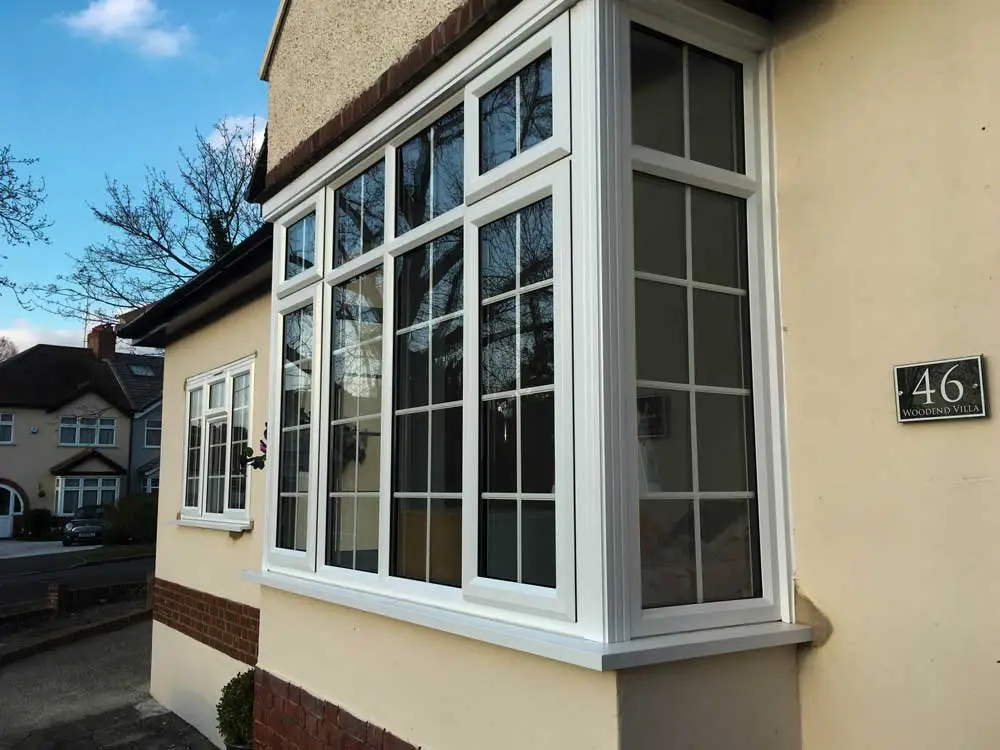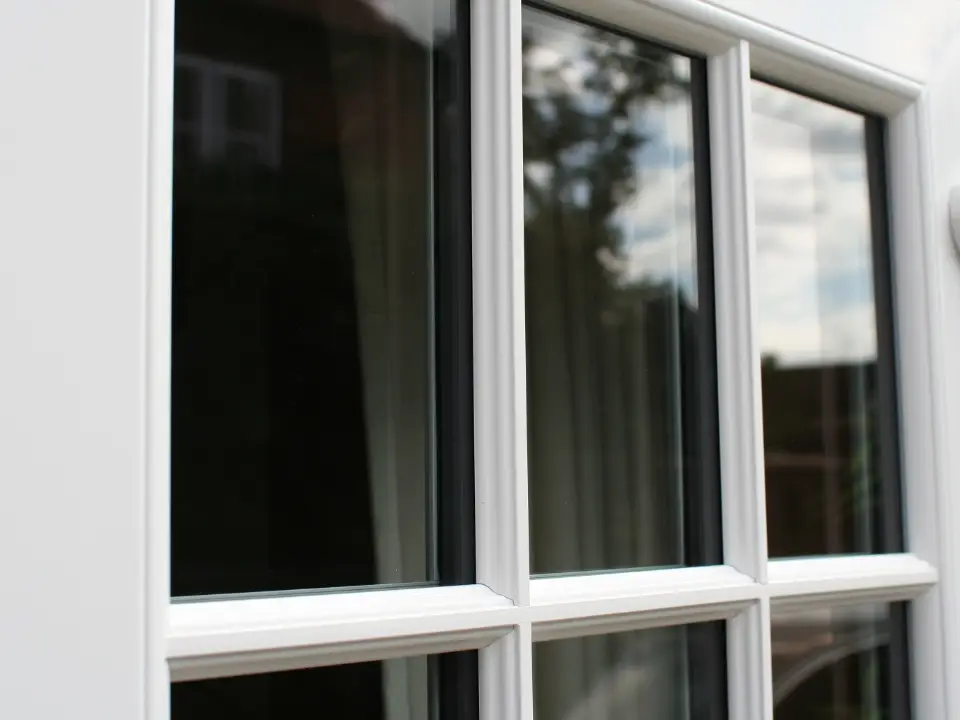What are Georgian & Astralgal bars?
When choosing windows for a home, architectural details can make a huge difference in the appearance and character of the property. Georgian bars and astragal bars are two popular options that add a classic, traditional look to modern double glazing. Although often confused, these two types of window bar designs have distinct differences and offer unique benefits. In this article, we’ll explain what Georgian bars and astragal bars are, their key differences, and why homeowners might choose one over the other.

Georgian Bar Example - Inside of Glass

Astragal Bar Example - Outside of Glass
What are Georgian Bars?
Georgian bars are a traditional window design feature that originated in the Georgian period (1714-1830). In those times, window manufacturing was limited by technology, which meant glass panes couldn’t be made very large. To create larger windows, smaller panes of glass were combined within a framework of wooden bars, which gave Georgian windows their iconic, multi-pane look.
In modern double glazing, Georgian bars are primarily decorative, offering the appearance of separate panes without compromising the efficiency of the window. Georgian bars are installed between the layers of glass, creating a seamless look that is easy to clean and maintain. This gives windows the classic Georgian style while retaining all the benefits of double glazing, such as energy efficiency, noise reduction, and improved insulation.
What are Astragal Bars?
Astragal bars are similar to Georgian bars but offer a slightly different look. While Georgian bars sit between the glass panes, astragal bars are installed on the outside of the window, giving the appearance of individually glazed panes. They are often paired with internal spacer bars that create the illusion of divided glass on the inside as well, enhancing the traditional look even further.
Astragal bars mimic the appearance of original period windows by creating a raised, three-dimensional effect on the glass. They’re typically used for properties that aim to replicate historic or classic styles, adding an authentic touch to modern windows while maintaining the energy efficiency of double glazing.
Georgian Bar vs. Astragal Bar: Key Differences
Though they both provide a similar aesthetic, Georgian bars and astragal bars differ in several key ways. Understanding these differences can help homeowners choose the option that best suits their property and personal style.
- Installation Method: Both glass units are installed into your home in the exact same way.
- Appearance: Georgian bars create a sleek, flat finish inside the glass, whereas astragal bars give a more traditional, raised look on the window’s exterior.
- Cleaning and Maintenance: Since Georgian bars are inside the glass unit, they’re easy to clean and maintain. Astragal bars, on the other hand, can require a bit more care to ensure dirt doesn’t build up around the bars.
- Cost: Georgian bars are often significantly cheaper than Astragal bars due to the simpler manufacturing process.
Choosing Between Georgian and Astragal Bars
Choosing between Georgian bars and astragal bars often comes down to personal preference and the style of the property. If you’re aiming for a sleek, low-maintenance option that provides a classic look, Georgian bars may be the better choice. However, if you want to replicate a more traditional, period-style appearance, astragal bars could be the ideal option.
Here are some factors to consider when deciding between the two:
1. Property Style: Consider the architecture of your home. Georgian bars tend to look best on modern or transitional homes, while astragal bars suit period properties or homes in historic areas where a more traditional look is desired.
2. Maintenance Preferences: If ease of cleaning is a priority, Georgian bars may be the right choice as they are within the glass. Astragal bars, however, may require additional cleaning due to their raised, external placement.
3. Budget: Generally, Georgian bars may are more cost-effective due to their simpler manufacture process.













Great post! Glazing is such an important aspect of both aesthetics and energy efficiency in modern buildings. It’s amazing how the right glass choices can completely transform a space while also improving insulation and reducing noise. Thanks for sharing!